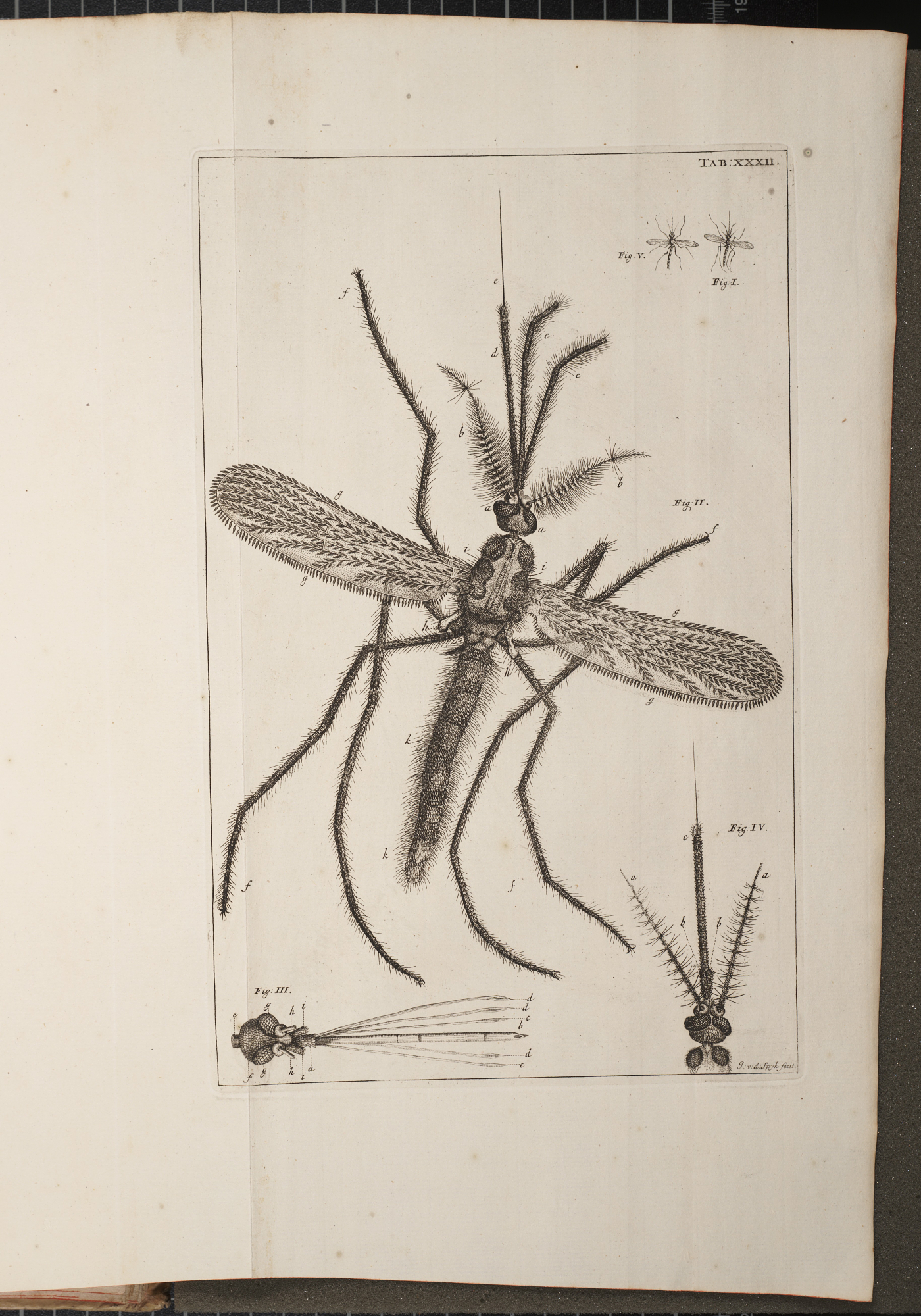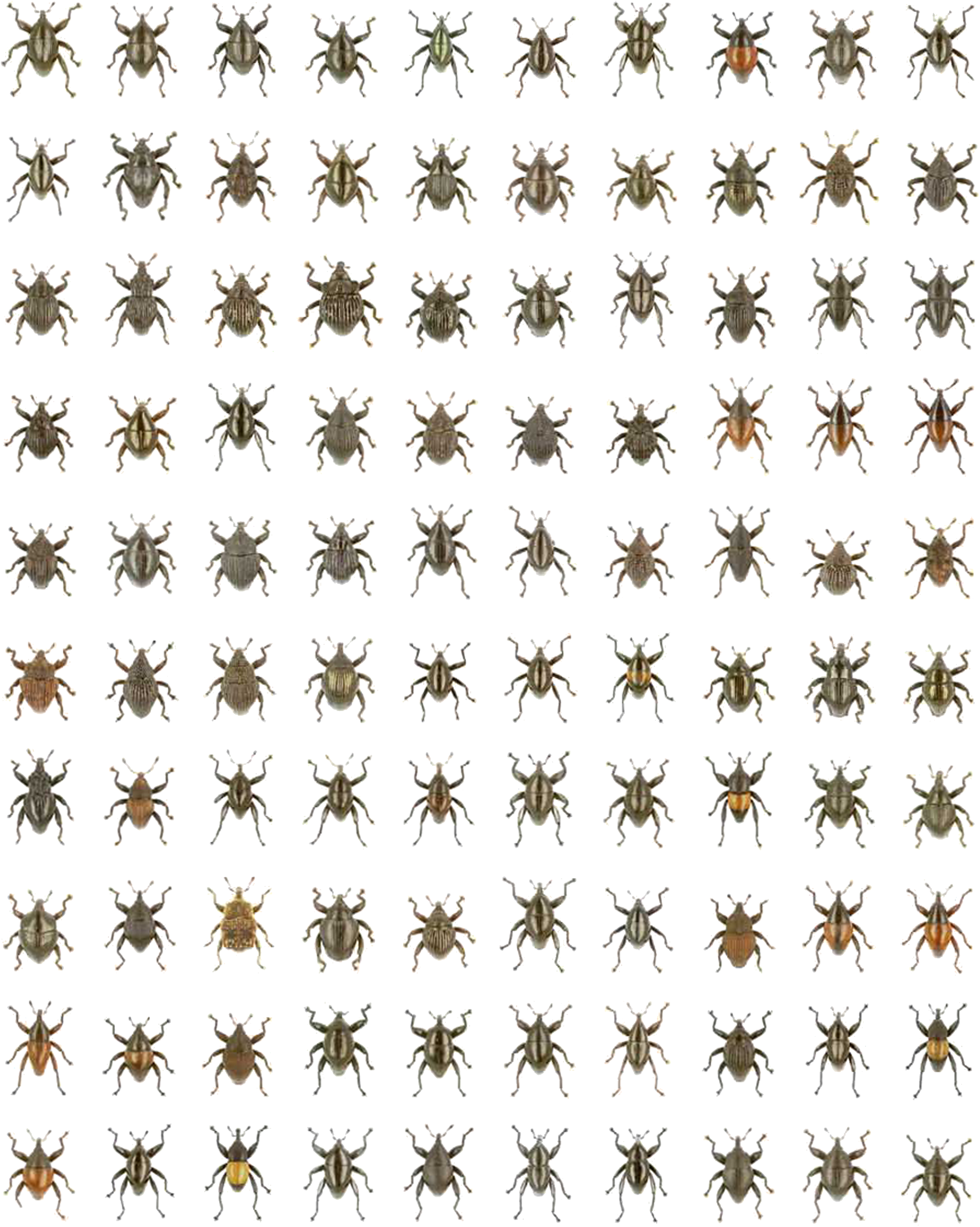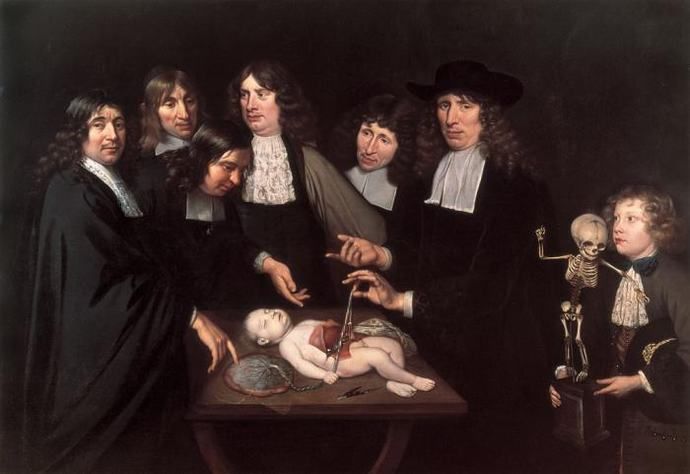|
Swammerdam
Jan Swammerdam (February 12, 1637 – February 17, 1680) was a Dutch biologist and microscopist. His work on insects demonstrated that the various phases during the life of an insect—egg, larva, pupa, and adult—are different forms of the same animal. As part of his anatomical research, he carried out experiments on muscle contraction. In 1658, he was the first to observe and describe red blood cells. He was one of the first people to use the microscope in dissections, and his techniques remained useful for hundreds of years. Education Swammerdam was baptized on 15 February 1637 in the Oude Kerk Amsterdam. His father was an apothecary, and an amateur collector of minerals, coins, fossils, and insects from around the world. His mother Baertje Jans Corvers died in 1661. As a youngster, Swammerdam had helped his father to take care of his curiosity collection. Despite his father's wish that he should study theology Swammerdam started to study medicine in 1661 at the Univers ... [...More Info...] [...Related Items...] OR: [Wikipedia] [Google] [Baidu] |
Antoinette Bourignon
Antoinette Bourignon de la Porte (13 January 161630 October 1680) was a French-Flemings, Flemish mysticism, mystic and adventurer. She taught that the Eschatology, end times would come soon and that the Last Judgment would then fall. Her belief was that she was chosen by God to restore true Christianity on earth and became the central figure of a spiritual network that extended beyond the borders of the Dutch Republic, including Holstein and Scotland. Bourignon's sect belonged to the spiritualist movements that have been characterized as the "third power". Early years Antoinette was born to a family of wealthy Catholic merchants in Lille in 1616. She was born with a severe cleft lip and palate, and initially "it was debated whether her life was worth preserving", although a subsequent surgery completely removed the birth defect. By her own account, she was attracted to religion from an early age, lecturing her parents on religion as young as five. Career In 1636, she fled a ma ... [...More Info...] [...Related Items...] OR: [Wikipedia] [Google] [Baidu] |
Reinier De Graaf
Regnier de Graaf (English spelling), original Dutch spelling Reinier de Graaf, or Latinized Reijnerus de Graeff (30 July 164117 August 1673) was a Dutch physician, physiologist and anatomist who made key discoveries in reproductive biology. He specialized in iatrochemistry and iatrogenesis, and was the first to develop a syringe to inject dye into human reproductive organs so that he could understand their structure and function. Biography De Graaf was born in Schoonhoven as the son of an carpenter/engineer or architect and studied medicine in Leuven (1658), Utrecht and Leiden (1663).https://www.ntvg.nl/system/files/publications/1974107890001a.pdf There his co-students were Jan Swammerdam, Niels Stensen, Ole Borch and Frederik Ruysch, cooperating with professor Franciscus Sylvius, Johannes van Horne and Lucas Schacht. All of them were interested in the organs of procreation and influenced by Rene Descartes' iatrophysical approach. He submitted his doctoral thesis on ... [...More Info...] [...Related Items...] OR: [Wikipedia] [Google] [Baidu] |
Melchisédech Thévenot
Melchisédech (or Melchisédec) Thévenot (c. 1620 – 29 October 1692) was a French author, scientist, traveler, cartographer, orientalist, inventor, and diplomat. He was the inventor of the spirit level and is also famous for his popular posthumously published 1696 book ''The Art of Swimming'', one of the first books on the subject and widely read during the 18th century (Benjamin Franklin, an avid swimmer in his youth, is known to have read it). The book popularized the breaststroke (see History of swimming) ; he was inducted into the International Swimming Hall of Fame in 1990. He also influenced the founding of the Académie Royale des Sciences (the French Academy of Sciences). Life Thévenot came from a family of royal office holders (nobles of the robe), which partly explains his wealth. He was reputed to speak English, Greek, Latin, Hebrew, and several oriental languages, including Arabic and Turkish. Thévenot's baptismal name was Nicolas, Melchisédech being added as th ... [...More Info...] [...Related Items...] OR: [Wikipedia] [Google] [Baidu] |
Niels Stensen
Niels Steensen ( da, Niels Steensen; Latinization (literature), Latinized to ''Nicolaus Steno'' or ''Nicolaus Stenonius''; 1 January 1638 – 25 November 1686History of Geology – Steno – Aber, James S. 2007. Retrieved 11 January 2012. ) was a Danish people, Danish scientist, a pioneer in both anatomy and geology who became a Catholic Church, Catholic bishop in his later years. Steensen was trained in the classical texts on science; however, by 1659 he seriously questioned accepted knowledge of the natural world. Importantly he questioned explanations for tear production, the idea that fossils grew in the ground and explanations of rock formation. His investigations and his subsequent conclusions on fossils and rock formation have led scholars to consider him one of the founders of modern strat ... [...More Info...] [...Related Items...] OR: [Wikipedia] [Google] [Baidu] |
Erythrocytes
Red blood cells (RBCs), also referred to as red cells, red blood corpuscles (in humans or other animals not having nucleus in red blood cells), haematids, erythroid cells or erythrocytes (from Greek ''erythros'' for "red" and ''kytos'' for "hollow vessel", with ''-cyte'' translated as "cell" in modern usage), are the most common type of blood cell and the vertebrate's principal means of delivering oxygen (O2) to the body tissues—via blood flow through the circulatory system. RBCs take up oxygen in the lungs, or in fish the gills, and release it into tissues while squeezing through the body's capillaries. The cytoplasm of a red blood cell is rich in hemoglobin, an iron-containing biomolecule that can bind oxygen and is responsible for the red color of the cells and the blood. Each human red blood cell contains approximately 270 million hemoglobin molecules. The cell membrane is composed of proteins and lipids, and this structure provides properties essential for physiologi ... [...More Info...] [...Related Items...] OR: [Wikipedia] [Google] [Baidu] |
Red Blood Cell
Red blood cells (RBCs), also referred to as red cells, red blood corpuscles (in humans or other animals not having nucleus in red blood cells), haematids, erythroid cells or erythrocytes (from Greek ''erythros'' for "red" and ''kytos'' for "hollow vessel", with ''-cyte'' translated as "cell" in modern usage), are the most common type of blood cell and the vertebrate's principal means of delivering oxygen (O2) to the body tissues—via blood flow through the circulatory system. RBCs take up oxygen in the lungs, or in fish the gills, and release it into tissues while squeezing through the body's capillaries. The cytoplasm of a red blood cell is rich in hemoglobin, an iron-containing biomolecule that can bind oxygen and is responsible for the red color of the cells and the blood. Each human red blood cell contains approximately 270 million hemoglobin molecules. The cell membrane is composed of proteins and lipids, and this structure provides properties essential for physiolo ... [...More Info...] [...Related Items...] OR: [Wikipedia] [Google] [Baidu] |
Johannes Van Horne
Johannes van Horne, Joannis van Horne (surname Latinized as Hornius, 2 September 1621 – 5 January 1670) was a Dutch anatomist best known for his illustrated atlas of myology. He was a professor of anatomy and surgery at Leiden University where his students included Nicolaus Steno. Biography Van Horne was born in Amsterdam in a Flemish merchant family. His father Jacob was a director of the Dutch East India Company. Educated at the University of Leiden he shifted from literature to medicine and may have assisted Johannes de Wale. He then went to study medicine at Utrecht under Willem van der Straaten. He then travelled around Europe, attending Johann Vesling's classes at Padua, Marco Aurelio Severino at Naples, and visiting Montpellier and England. He received an honorary degree from the University of Basel. After returning home, he became a demonstrator of anatomy at Leiden University and became an extraordinary professor of anatomy in 1651. He was made full professor at Leid ... [...More Info...] [...Related Items...] OR: [Wikipedia] [Google] [Baidu] |
Franciscus Sylvius
Franciscus Sylvius (15 March 1614 – 19 November 1672), born Franz de le Boë, was a Dutch physician and scientist (chemist, physiologist and anatomist) who was an early champion of Descartes', Van Helmont's and William Harvey's work and theories. He was one of the earliest defenders of the theory of circulation of the blood in the Netherlands, and commonly falsely cited as the inventor of gin – others pinpoint the origin of gin to Italy. Life Sylvius, a Latinization of "de le Boë" translated as "of the woods", was born in Hanau to an affluent family originally from Cambrai, but worked and died in the Netherlands. He studied medicine at the Protestant Academy of Sedan, and from 1632 to 1634 at Leiden University under Adolph Vorstius and Otto Heurnius. In 1634 he held a dissertation titled ''Positiones variae medicae'' (''Various Medical Positions'') under the direction of Vorstius, in which he defended the proposition that there should be a pulmonary circulation ... [...More Info...] [...Related Items...] OR: [Wikipedia] [Google] [Baidu] |
Microscope
A microscope () is a laboratory instrument used to examine objects that are too small to be seen by the naked eye. Microscopy is the science of investigating small objects and structures using a microscope. Microscopic means being invisible to the eye unless aided by a microscope. There are many types of microscopes, and they may be grouped in different ways. One way is to describe the method an instrument uses to interact with a sample and produce images, either by sending a beam of light or electrons through a sample in its optical path, by detecting photon emissions from a sample, or by scanning across and a short distance from the surface of a sample using a probe. The most common microscope (and the first to be invented) is the optical microscope, which uses lenses to refract visible light that passed through a thinly sectioned sample to produce an observable image. Other major types of microscopes are the fluorescence microscope, electron microscope (both the transmi ... [...More Info...] [...Related Items...] OR: [Wikipedia] [Google] [Baidu] |
Entomology
Entomology () is the science, scientific study of insects, a branch of zoology. In the past the term "insect" was less specific, and historically the definition of entomology would also include the study of animals in other arthropod groups, such as arachnids, myriapods, and crustaceans. This wider meaning may still be encountered in informal use. Like several of the other fields that are categorized within zoology, entomology is a taxon-based category; any form of scientific study in which there is a focus on insect-related inquiries is, by definition, entomology. Entomology therefore overlaps with a cross-section of topics as diverse as molecular genetics, behavior, neuroscience, biomechanics, biochemistry, systematics, physiology, developmental biology, ecology, morphology (biology), morphology, and paleontology. Over 1.3 million insect species have been described, more than two-thirds of all known species. Some insect species date back to around 400 million years ago. Th ... [...More Info...] [...Related Items...] OR: [Wikipedia] [Google] [Baidu] |
Entomology
Entomology () is the science, scientific study of insects, a branch of zoology. In the past the term "insect" was less specific, and historically the definition of entomology would also include the study of animals in other arthropod groups, such as arachnids, myriapods, and crustaceans. This wider meaning may still be encountered in informal use. Like several of the other fields that are categorized within zoology, entomology is a taxon-based category; any form of scientific study in which there is a focus on insect-related inquiries is, by definition, entomology. Entomology therefore overlaps with a cross-section of topics as diverse as molecular genetics, behavior, neuroscience, biomechanics, biochemistry, systematics, physiology, developmental biology, ecology, morphology (biology), morphology, and paleontology. Over 1.3 million insect species have been described, more than two-thirds of all known species. Some insect species date back to around 400 million years ago. Th ... [...More Info...] [...Related Items...] OR: [Wikipedia] [Google] [Baidu] |
Frederik Ruysch
Frederik Ruysch (; March 28, 1638 – February 22, 1731) was a Dutch botany, botanist and anatomy, anatomist. He is known for developing techniques for preserving anatomical specimens, which he used to create dioramas or scenes incorporating human parts. His anatomical preparations included over 2,000 anatomical, pathological, zoological, and botanical specimens, which were preserved by either drying or embalming. Ruysch is also known for his proof of valves in the lymphatic system, the vomeronasal organ in snakes, and ''arteria centralis oculi'' (the central artery of the eye). He was the first to describe the disease that is today known as Hirschsprung's disease, as well as several pathological conditions, including intracranial teratoma, enchondromatosis, and Majewski's polydactyly syndrome, Majewski syndrome. Life Frederik Ruysch was born in The Hague as the son of a government functionary and started as the pupil of a druggist. Fascinated by anatomy, he studied at the univer ... [...More Info...] [...Related Items...] OR: [Wikipedia] [Google] [Baidu] |









